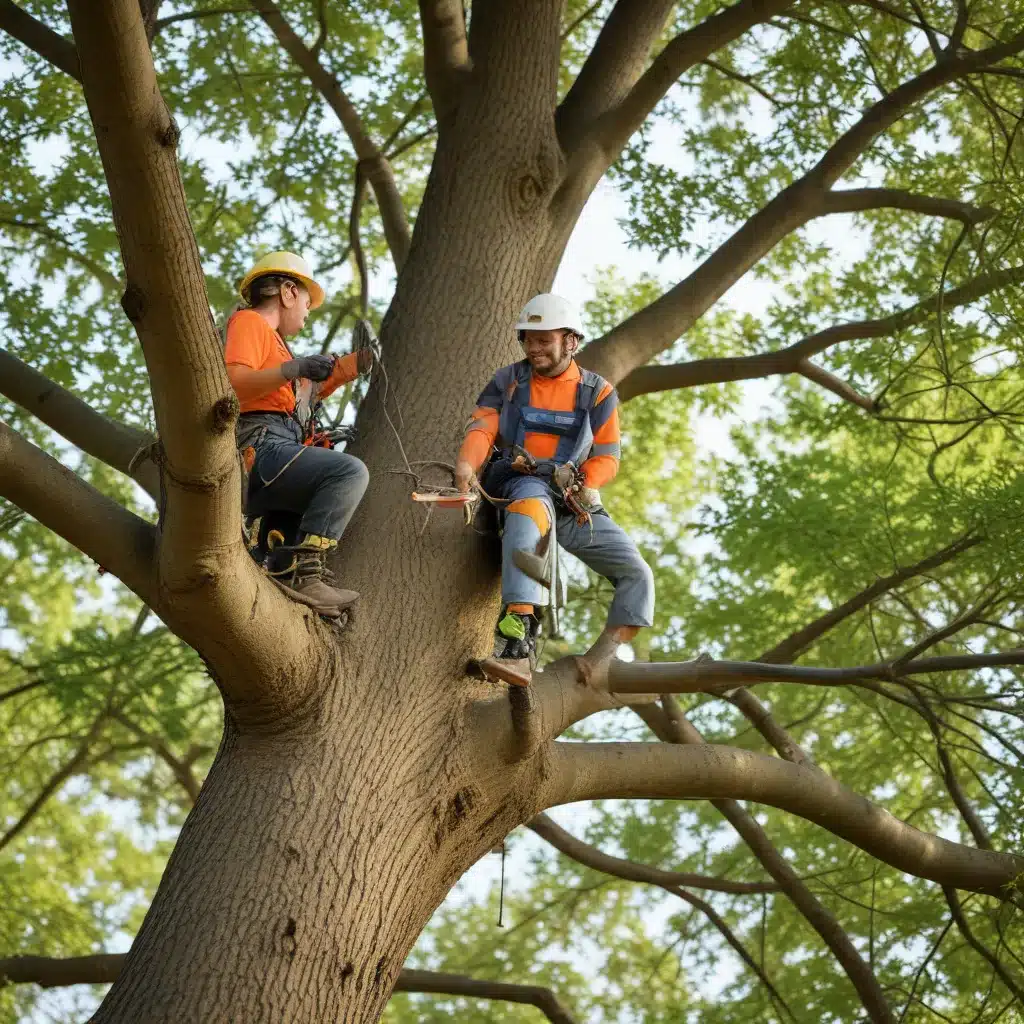
As a tree care specialist with TriCounty Tree Care, I’m excited to share deep insights into the intricate world of seasonal tree maintenance. Whether you’re a homeowner tending to your backyard oasis or a landscaper managing sprawling commercial properties, understanding the rhythms of tree biology is essential for preserving the health and vitality of these living, breathing organisms.
Seasonal Considerations
Spring Maintenance
As the earth awakens from its winter slumber, trees undergo a remarkable transformation. Buds swell, leaves unfurl, and the circulatory system springs to life. This is the opportune time to assess the structural integrity of your trees and address any issues that may have arisen during the dormant season. Carefully prune away dead or damaged branches, remove competing vegetation, and ensure adequate soil moisture to support the trees’ newfound vigor.
Summer Maintenance
The height of the growing season calls for vigilant monitoring and proactive care. Maintaining proper hydration is paramount, as trees can quickly become stressed by prolonged drought conditions. Strategically applying mulch around the base can help retain soil moisture and suppress weed growth. Regular inspections for signs of disease or pest infestations are also crucial, as early detection is key to preventing widespread damage.
Fall Maintenance
As the days grow shorter and temperatures begin to drop, trees shift their focus to preparing for winter dormancy. Pruning during this time can be beneficial, as it allows the trees to allocate their resources towards healing wounds and strengthening their structure. Additionally, fall is an ideal time to address soil health through aeration and the application of organic amendments.
Winter Maintenance
Though trees may appear to be in a state of hibernation, the winter months offer an opportunity to assess their overall condition and address any concerns. Carefully inspect for signs of frost damage, dieback, or insect activity, and take appropriate action to mitigate these issues before the arrival of spring.
Tree Anatomy and Biology
To truly understand the intricacies of seasonal tree maintenance, it’s essential to grasp the fundamental principles of tree anatomy and biology. At the core of a tree lies the root system, which is responsible for absorbing water and essential nutrients from the soil. The trunk and branches form the tree’s structural framework, supporting the expansive canopy and facilitating the movement of nutrients and water throughout the plant.
The life cycle of a tree is a remarkable testament to the resilience of nature. From the initial germination of a seed to the towering maturity of a centuries-old specimen, trees undergo a continuous process of growth, reproduction, and adaptation. Understanding these cycles is crucial for anticipating the tree’s needs and tailoring your maintenance strategies accordingly.
Tree Care Practices
Pruning Techniques
Pruning is a vital component of tree care, as it helps maintain structural integrity, encourage healthy growth, and mitigate potential hazards. The thinning of branches promotes air circulation, reduces the risk of disease, and allows more sunlight to penetrate the canopy. Shaping the tree’s form can enhance its aesthetic appeal and improve its resilience to environmental stressors. Removing deadwood, on the other hand, eliminates potential entry points for pests and pathogens, while also improving the overall appearance of the tree.
Soil Management
The health of a tree is intrinsically linked to the quality of the soil in which it grows. Soil composition, characterized by the balance of essential nutrients, organic matter, and drainage properties, plays a crucial role in a tree’s ability to thrive. Regular soil testing and the strategic application of fertilizers can help ensure that the tree’s nutritional needs are met. Additionally, aeration can improve soil structure and promote the exchange of air and water, benefiting the root system.
Tree Health Monitoring
Disease Identification
Vigilant monitoring for signs of disease and pest infestations is essential for maintaining the health of your trees. Common tree diseases, such as fungal infections, bacterial blights, and viral disorders, can compromise the tree’s immune system and lead to irreversible damage if left untreated. By familiarizing yourself with the symptoms of these ailments, you can take prompt action to address the underlying issues and prevent the spread of disease.
Preventative Measures
Proactive care is the key to ensuring the long-term vitality of your trees. Establishing a consistent watering schedule, based on the tree’s specific needs and environmental conditions, can help mitigate the effects of drought and promote healthy root development. The strategic application of mulch around the tree’s base can help retain soil moisture, suppress weed growth, and protect the roots from temperature extremes. Integrated pest management strategies, combining cultural, biological, and selective chemical controls, can effectively manage infestations while minimizing the impact on the broader ecosystem.
Sustainable Tree Care
Environmental Impacts
Trees play a vital role in maintaining the delicate balance of our ecosystem. Through the process of photosynthesis, they absorb carbon dioxide and release oxygen, contributing to the mitigation of greenhouse gas emissions. Additionally, trees provide essential habitat for a diverse array of flora and fauna, supporting the intricate web of life that sustains our natural world.
Community Engagement
Responsible tree care extends beyond the boundaries of individual properties. Local tree ordinances and community-driven initiatives can provide valuable guidance and resources for homeowners and professionals alike. By participating in volunteer programs and collaborating with like-minded individuals, we can foster a shared commitment to the preservation and enhancement of our urban and suburban tree canopies.
As a tree care specialist with TriCounty Tree Care, I encourage you to embrace the rhythms of seasonal maintenance and unlock the mysteries of tree biology. By cultivating a deep understanding of these living, breathing organisms, we can ensure the long-term health and vitality of our trees, while also contributing to the broader ecological well-being of our communities. Visit TriCounty Tree Care to learn more about our comprehensive services and expert guidance.


